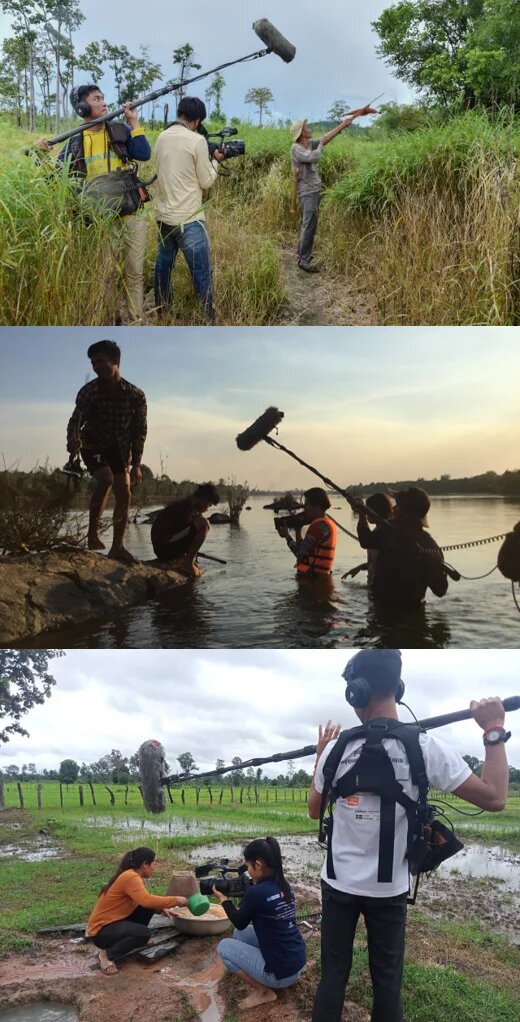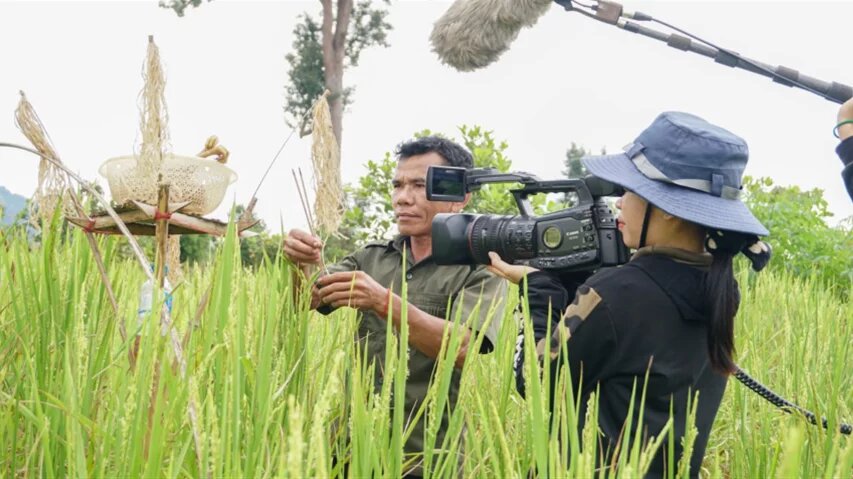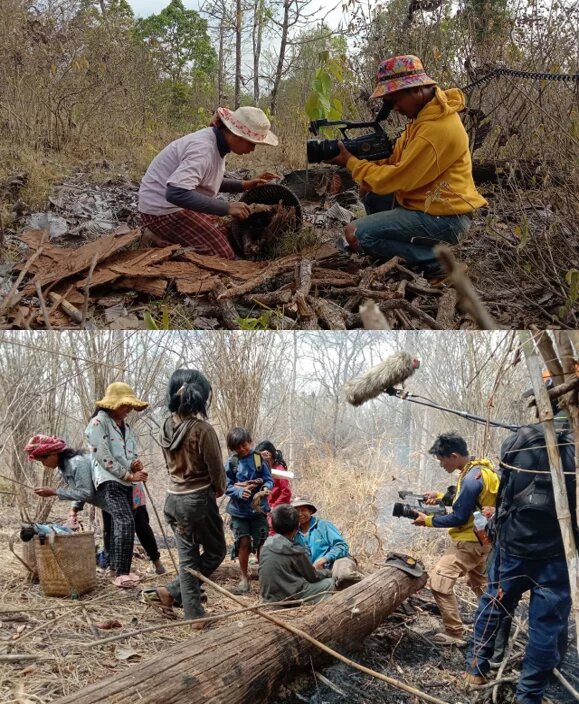
Chan Khamsing’s camera follows Boeung Eak into a stream in Ratanakiri province. The 65-year-old Indigenous woman walks through the flooded waters and starts hacking away at a cluster of bamboo, harvesting the tender shoots.

In the next shot, Eak is seen foraging through the various wild grasses growing around her house, picking the leaves of the sponge gourd and other vegetables. All the while, Khamsing’s camera silently follows Eak, she allows the narrative to breathe and does not rush it. There is no music, no commentary. All you can hear are the sounds around Eak’s home, her occasional comments and the clap of thunder in the distance.
Eak is prepping ingredients to make erhaang soup, an Indigenous dish made with wild vegetables, bamboo shoots and a salty sauce that gives the soup its name. The camera then follows Eak into her home, which is constructed with sheets of metal, cloth and bamboo poles, where she says the Khmer Rouge never allowed Indigenous people held in cooperatives to make the soup. They were allowed to make only soup that had to be eaten by all people held at the camp.
“I make this soup to carry on the tradition,” Eak says.
Khamsing then follows Eak as she makes the soup, long pauses with no action or talking give viewers an insight into what it is to live her life. All the while, Eak smokes a pipe with tobacco.
The story of the erhaang soup is unlikely to make it to the national media or go viral on social media, underscoring the near complete absence of content from Indigenous voices and communities in the mainstream. Like most countries, Cambodia’s Indigenous people and their lives are largely absent in the country’s contemporary narrative.
But, budding filmmakers like Khamsing, herself from the Indigenous community, are working to document Indigenous lives, language, experiences and culture. She is part of a cohort of around two dozen Indigenous youth from Ratanakiri and Mondulkiri provinces who have been trained in filmmaking at the Bophana Center, with the explicit aim to increase visibility and provoke positive social change in their communities.
The program allows students to observe their communities in search of storylines, using one of two participatory approaches: students and the community jointly identify a story or social issue that needs to be highlighted or the students platform a protagonist to talk about their issues using the lens of the student’s camera.
The ongoing program and the nearly three dozen short films produced so far by young Indigenous filmmakers underline that a slice-of-life, 17-minute short movie about the origins of an Indigenous soup can give us deep insights into the lives and history of Cambodia’s Indigenous people.
This article is an excerpt from "Profiles of Courage." Click here for the full reading.
